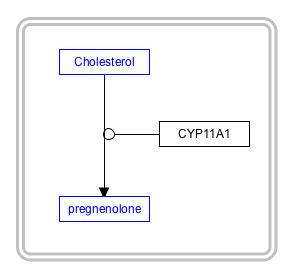Background
Cellular compartments in cell biology comprise all of the closed parts within the cytosol of a eukaryotic cell, usually surrounded by a single or double lipid layer membrane. These compartments are often, but not always, defined as membrane enclosed regions. The formation of cellular compartments is called compartmentalization. Both organelles, the mitochondria and chloroplasts (in photosynthetic organisms), are compartments. Other compartments such as peroxisomes, lysosomes, the endoplasmic reticulum, the cell nucleus or the Golgi apparatus are not of endosymbiotic origin. Smaller elements like vesicles, and sometimes even microtubules can also be counted as compartments. Source: Wikipedia
Your Mission
Draw the compartment depicted in this figure:

- Download the starter pathway here: draw-compartment-start.gpml.
- Launch PathVisio and open the dowloaded file via File > Open.
- Select the Cell object from the Objects panel or the toolbar.
- Click on the canvas to place the object.
- With the cell object selected, use the yellow resize targets to change the size of the object.
- With the cell object selected, click and drag anywhere on the object outline to position it over the entire catalysis reaction.
- Done!